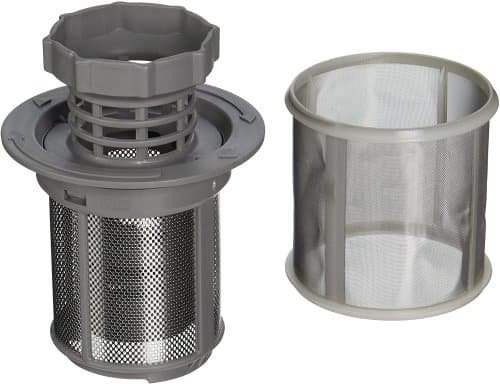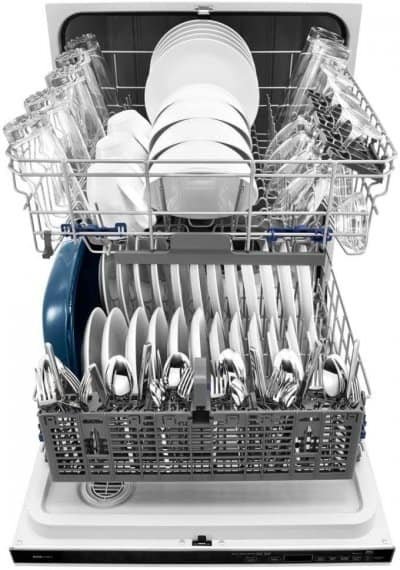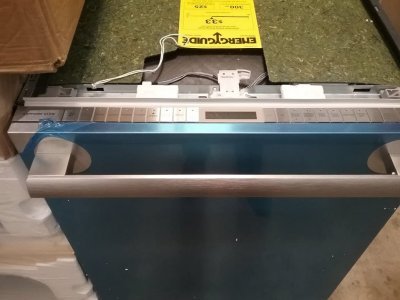Having a clean and efficient dishwasher is essential for maintaining the hygiene and cleanliness of your kitchenware. Over time, sludge and residue can build up inside your dishwasher, leading to unpleasant odors and decreased performance. In this article, we will guide you through the process of cleaning sludge from your dishwasher, ensuring optimal functionality and a fresh-smelling kitchen. Let’s dive in!
Table of Contents
Understanding Dishwasher Sludge
Dishwasher sludge refers to the accumulation of food particles, grease, soap residue, and minerals that can build up inside your dishwasher over time. This sludge can clog the filters, spray arms, and other components, leading to poor performance and unpleasant odors. Regular cleaning is necessary to prevent sludge from affecting the efficiency and cleanliness of your dishwasher.
Signs of Sludge Build-Up
There are several signs that indicate the presence of sludge in your dishwasher:
- Foul odors emanating from the dishwasher
- Cloudy glassware and dishes after a wash cycle
- Reduced cleaning effectiveness
- Water not draining properly from the dishwasher
If you notice any of these signs, it’s time to clean the sludge from your dishwasher.
Preparing for Cleaning
Before starting the cleaning process, gather the following supplies:
- Rubber gloves
- Vinegar
- Baking soda
- Soft brush or toothbrush
- Dish soap
- Microfiber cloth
Ensure that your dishwasher is empty and disconnected from the power source before proceeding with the cleaning.

Cleaning the Filters
- Locate the dishwasher’s filters. These are usually found at the bottom of the dishwasher, near the spray arms.
- Remove the filters carefully and rinse them under running water to remove loose debris.
- Soak the filters in a mixture of warm water and vinegar for 15 minutes to break down any stubborn sludge.
- Scrub the filters gently with a soft brush or toothbrush to remove any remaining residue.
- Rinse the filters thoroughly and place them back into the dishwasher.
Removing Sludge from the Spray Arms
- Remove the dishwasher’s spray arms by twisting them counterclockwise or following the manufacturer’s instructions.
- Inspect the spray arms for any clogs or debris. Use a toothpick or a thin wire to dislodge any obstructions.
- Soak the spray arms in a solution of vinegar and water for 30 minutes to dissolve sludge and mineral deposits.
- After soaking, rinse the spray arms thoroughly and reattach them to the dishwasher.

Cleaning the Interior Walls
- Create a paste by mixing baking soda and water until it forms a thick consistency.
- Apply the paste to a microfiber cloth and use it to scrub the interior walls of the dishwasher.
- Pay special attention to areas with visible sludge or stains.
- Rinse the interior walls with water to remove the baking soda residue.
Eliminating Odors
To eliminate odors and leave your dishwasher smelling fresh, follow these steps:
- Place a cup of white vinegar on the top rack of your dishwasher.
- Run a hot water cycle without any dishes or detergent.
- Sprinkle a cup of baking soda on the bottom of the dishwasher.
- Run another hot water cycle to remove any remaining odors.
Maintaining a Clean Dishwasher
To keep your dishwasher clean and prevent sludge build-up in the future, follow these tips:
- Scrape off excess food from dishes before loading them into the dishwasher.
- Run your dishwasher on a hot water cycle regularly.
- Use dishwasher cleaner or vinegar as a monthly maintenance treatment.
- Check and clean the filters and spray arms periodically.
Additional Tips and Tricks
- If your dishwasher has a self-cleaning function, follow the manufacturer’s instructions to activate it.
- Avoid using abrasive cleaners or scrubbing pads that may damage the dishwasher’s surfaces.
- Consider using dishwasher-safe cleaning tablets or pods for convenience.

How often should I clean a dishwasher?
It is recommended to clean your dishwasher at least once a month to prevent sludge build-up and maintain optimal performance.
Can I use bleach to clean my dishwasher?
It is not recommended to use bleach as it can damage the rubber components of your dishwasher. Stick to vinegar and baking soda for safe and effective cleaning.
What should I do if the sludge persists after cleaning?
If the sludge persists even after cleaning, it might indicate a more significant issue. Consider contacting a professional dishwasher repair service for further inspection and assistance.
Can I use regular soap in the dishwasher?
No, regular soap is not suitable for dishwashers. Always use dishwasher detergent specifically designed for automatic dishwashers to ensure proper cleaning and avoid damaging the appliance.
Is it necessary to rinse dishes before loading them into the dishwasher?
While it’s not essential to pre-rinse dishes thoroughly, it is recommended to scrape off excess food particles to prevent clogging the filters and spray arms.
Conclusion
Cleaning sludge from your dishwasher is crucial for maintaining its performance and ensuring hygienic cleaning of your kitchenware. By following the steps outlined in this article, you can effectively remove sludge, eliminate odors, and keep your dishwasher in top shape. Remember to clean the filters, spray arms, and interior walls regularly and follow maintenance tips to prevent future build-up. Enjoy a sparkling clean dishwasher and fresh-smelling kitchen!

